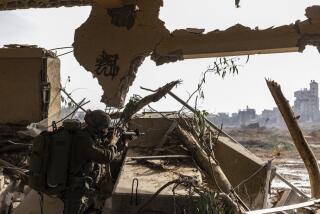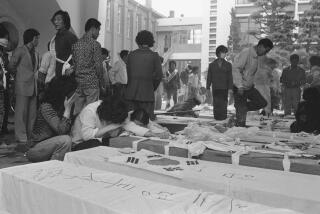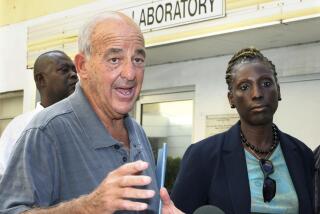Salvadoran War Toll Down in ’86 : Killings by Death Squads Also Decrease, Archbishop Says
The toll of dead and missing, including battlefield casualties, in El Salvador’s civil war decreased slightly this year, and the number of killings blamed on right-wing death squads was the lowest in any year since the war broke out in early 1980, according to figures made public Sunday by Msgr. Arturo Rivera y Damas, the Roman Catholic archbishop of San Salvador.
At the same time, figures complied by the church’s legal office showed an increase in numbers of deaths caused by land mines, which Rivera y Damas called “one of the favorite arms of the guerrillas.”
In his final homily of 1986, Rivera y Damas said there were what he called 1,725 “victims”--dead and disappeared--in the war between the U.S.-backed government and the leftist guerrillas fighting to topple the administration of President Jose Napoleon Duarte. That toll is about 11% below the 1,913 casualties reported by the church last year and dramatically lower than the 1981 peak of 13,000.
No Breakdown Given
The archbishop did not make clear how many of the 1,725 victims were civilians and how many were combatants, nor did he say how the figures were gathered. It appeared that a majority of deaths occurred during military operations.
Rivera y Damas called for an end to the war “whose weight is supported by the entire country, and which we have repeatedly termed useless.” He urged the warring sides to resume peace talks that broke off without results in 1984.
Last June, Duarte announced that he was willing to meet with guerrilla leaders of the Farabundo Marti National Liberation Front for what would have been a third round of peace talks, but the government and guerrillas were never able to agree on conditions for such a meeting.
Rivera y Damas said that 42 people were killed during the past year by death squads--a third of the 136 such deaths reported the previous year, and a large drop from the early 1980s, when mutilated bodies were found daily on street corners and roadsides in a wave of killings by military and paramilitary groups intent on wiping out an urban guerrilla network and its suspected sympathizers.
Wounded Not Mentioned
The archbishop also did not give figures for the number of wounded in the war or for the number of arrests and the cases of reported torture of political prisoners. In the last year, the government arrested several human rights activists who had been accused of belonging to the guerrilla front by a rebel dissident in police custody.
Many civilian and military victims of land mines are wounded rather than killed. Salvadoran army and U.S. Embassy figures earlier this year showed about seven times as many people were wounded as killed by the exploding devices.
While both sides in the war plant mines, a majority of the casualties appear to be caused by guerrilla-laid mines. Between 40% and 70% of the army’s casualties are caused by mines.
Both sides deny responsibility for civilian casualties.
In an interview in Managua, Nicaragua, recently, Farabundo Marti leader Shafik Handal said the guerrillas were willing to negotiate their use of mines if the government would negotiate its use of bombing from helicopters and airplanes.
More to Read
Start your day right
Sign up for Essential California for news, features and recommendations from the L.A. Times and beyond in your inbox six days a week.
You may occasionally receive promotional content from the Los Angeles Times.






